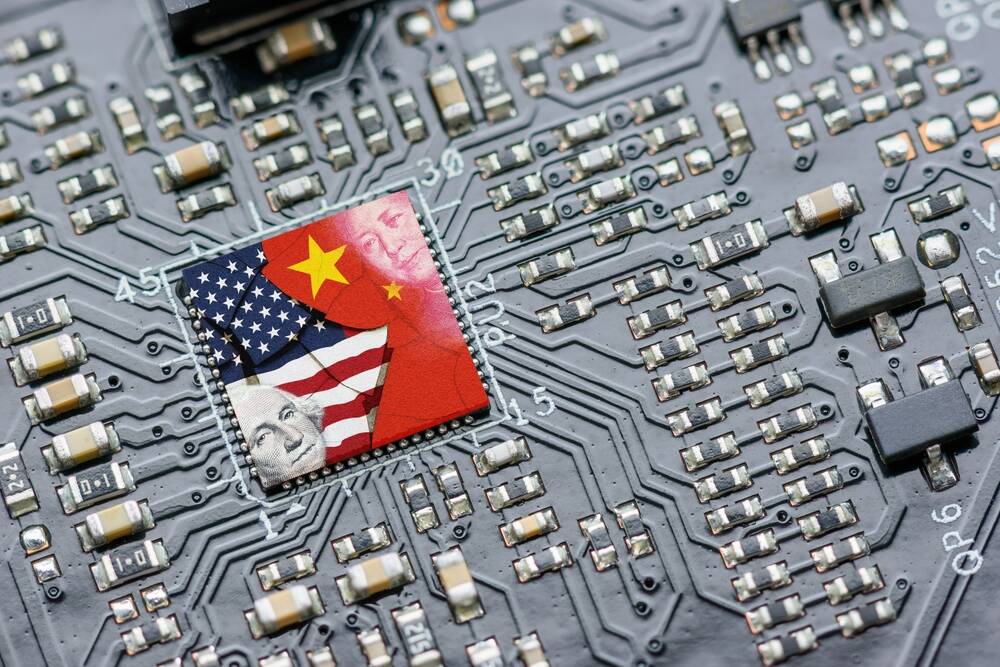Why We Think Intel May Be Gearing Up To Push Its GPU Max Chips Into China

Intel is retooling its Data Center GPU Max lineup just weeks after the departure of Accelerated Computing Group lead Raja Koduri and the cancellation of the x86 titan's next-gen Rialto Bridge platform.
Specifically, the silicon giant is unlaunching its GPU Max 1350 accelerator card in favor of one catered to "different markets," an Intel spokesperson told The Register Tuesday.
While much of the fanfare around the unveiling of Intel's long-awaited Ponte Vecchio-based GPU Max series in November centered on the 600W liquid-cooled 1550 — which will power the US Department of Energy's Argonne National Lab's Aurora Supercomputer — it was just one of three cards announced at the time.
One of those cards was the GPU Max 1350, which was positioned as Intel's mid-tier datacenter card, sporting a more sedate 450W TDP and a conventional air cooler. This made it more accessible for customers unprepared to plumb their deployments for liquid cooling.
With all that said, an air-cooled variant of the 1550 is now being offered amid a rethink about the 1350.
"We launched the Intel Data Center Max GPU 1550 (600W) and began production shipments earlier this year," Intel told us today. "We have since expanded our support by offering Intel Data Center Max GPU 1550 to include air-cooled solutions."
Now that the 1550 can also be had in an air-cooled version, Intel says it's "streamlining" its product offerings by removing the 1350. "We will introduce the Data Center GPU Max 1450 SKU later in 2023, which has lower I/O bandwidth for different markets and will be able to use air- and liquid-cooling solutions," the biz told us.
The TDP of this new chip isn't clear, though arguably the more interesting element is Intel's focus on other markets and reduced I/O bandwidth, which could suggest Intel may be gearing up to sell the GPUs in China.
Trade restrictions announced last fall barred the export of processors capable of 600GBps of I/O bandwidth to the Middle Kingdom.
- Intel buries news of GPU cuts and delays in low-key Friday post
- Intel successfully ships an updated datacenter roadmap
- Mac shipments slump as Apple finally bitten by glum PC demand
- Intel ships multi-die chips ahead of schedule – to the US military
Refactoring its datacenter GPU portfolio for the Chinese market is hardly surprising given how large a market the Middle Kingdom already is for the x86 giant. China accounts for a substantial chunk of Intel's revenues, and, given the take off of AI/ML and HPC services from Chinese cloud providers like Alibaba and Baidu, Intel may be looking to capitalize on a larger slice of this market.
The Register asked Intel whether the cards are aimed at the Chinese market; we'll let you know if we hear anything back.
Intel would hardly be the first to go down this route, and there is no guarantee that worsening trade relations between Washington and Beijing won't spoil the plans. Last year, Nvidia announced a nerfed version of its popular A100 accelerator called the A800, which featured half the memory and about two-thirds the bandwidth of the full-fat card in order to comply with US export law. The chipmaker has since announced a China-specific version of its next-gen Hopper H100 GPUs called the H800.
“China is a massive market in itself,” Daniel Newman, chief analyst at Futurum Research told The Register. “Companies like Intel being able to build a product that can meet the requirements of these export control is a way of addressing the fact that there's still a very large market for AI workloads that don’t fit the criteria of what regulators are most concerned about.”
However, Newman notes that Intel, which hopes to claim a heft chunk of Uncle Sam's CHIPS subsidies, needs to be careful to play by the rules, and that could require tuning down parts in accordance to changing US export restrictions.
Regardless, the Intel GPU Max 1450's days are numbered, as the manufacturer has effectively killed off its high-end dedicated GPU roadmap after Ponte Vecchio. Instead the microprocessor goliath plans to pursue an APU, combining CPU and GPU cores, codenamed Falcon Shores. However, the first chips based on that architecture have been delayed until 2025.
Intel's GPU line has been on uncertain footing since the corporation restructured its Accelerated Computing Group and demoted Koduri back to chief architect last winter. Earlier this month, the company's GPU unit suffered another blow after Koduri jumped ship to pursue opportunities outside the company. He also just joined the board of Tenstorrent, a RISC-V-friendly AI chip designer led by semiconductor veteran Jim Keller. ®
From Chip War To Cloud War: The Next Frontier In Global Tech Competition
The global chip war, characterized by intense competition among nations and corporations for supremacy in semiconductor ... Read more
The High Stakes Of Tech Regulation: Security Risks And Market Dynamics
The influence of tech giants in the global economy continues to grow, raising crucial questions about how to balance sec... Read more
The Tyranny Of Instagram Interiors: Why It's Time To Break Free From Algorithm-Driven Aesthetics
Instagram has become a dominant force in shaping interior design trends, offering a seemingly endless stream of inspirat... Read more
The Data Crunch In AI: Strategies For Sustainability
Exploring solutions to the imminent exhaustion of internet data for AI training.As the artificial intelligence (AI) indu... Read more
Google Abandons Four-Year Effort To Remove Cookies From Chrome Browser
After four years of dedicated effort, Google has decided to abandon its plan to remove third-party cookies from its Chro... Read more
LinkedIn Embraces AI And Gamification To Drive User Engagement And Revenue
In an effort to tackle slowing revenue growth and enhance user engagement, LinkedIn is turning to artificial intelligenc... Read more

